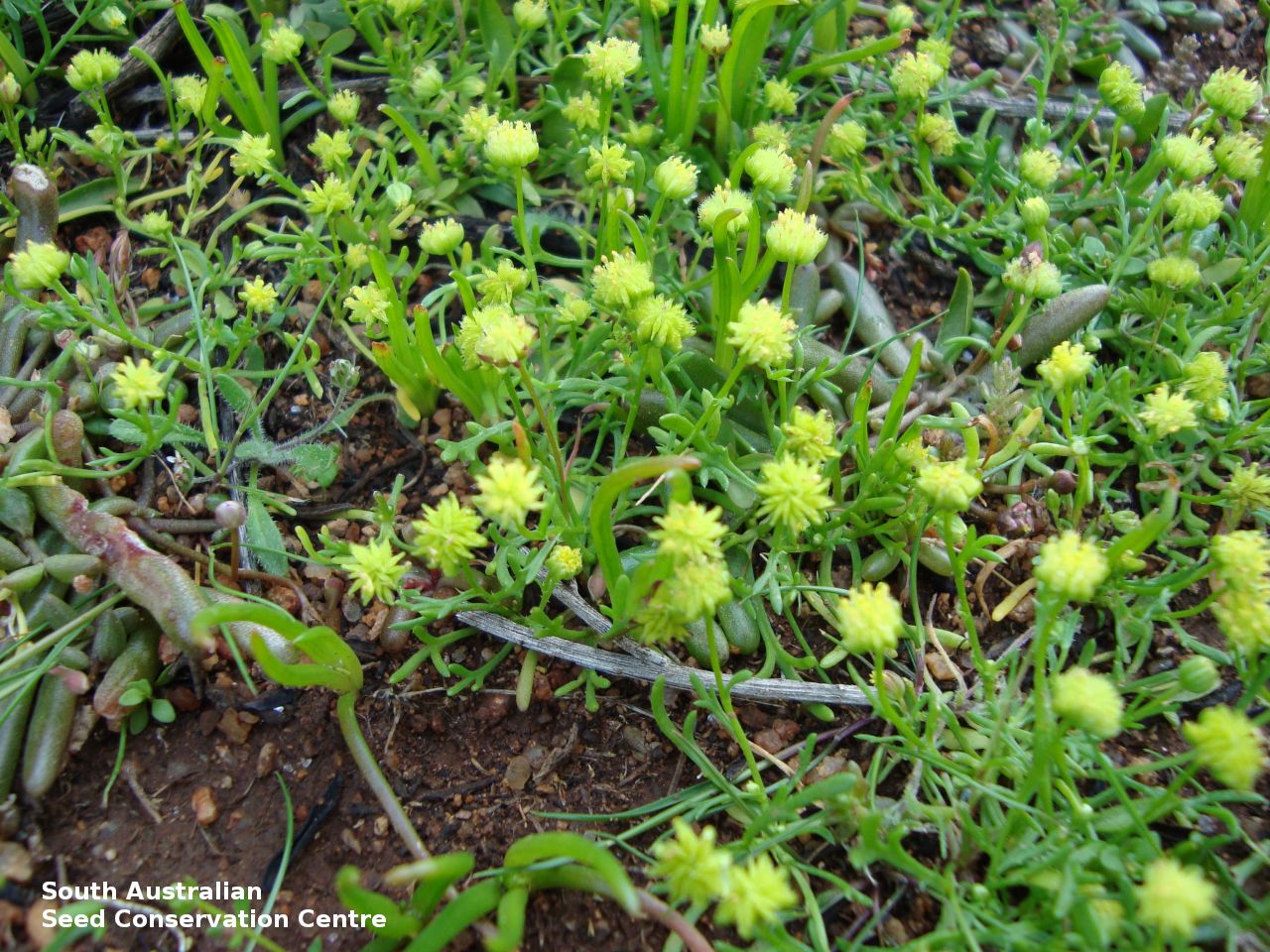






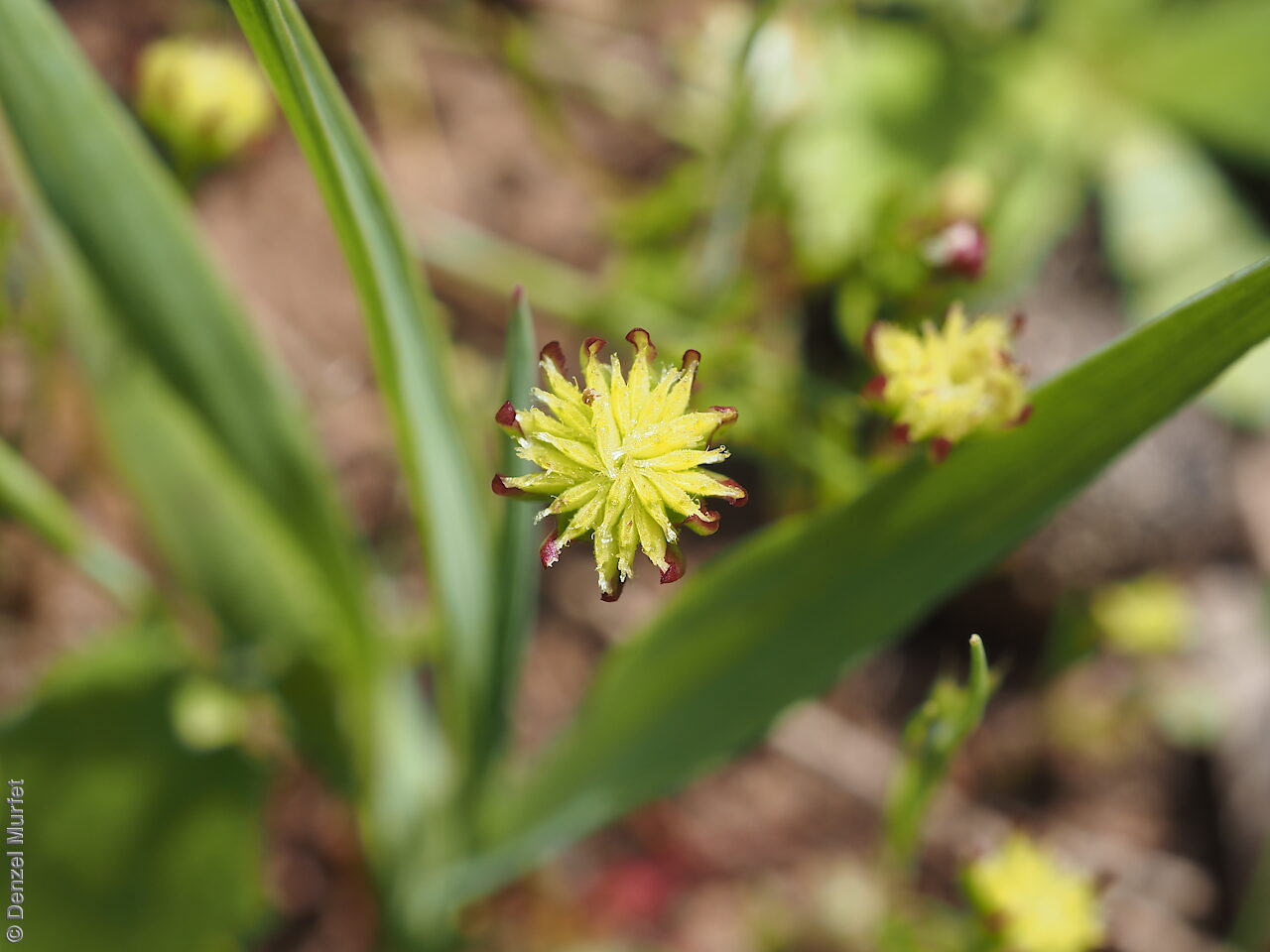

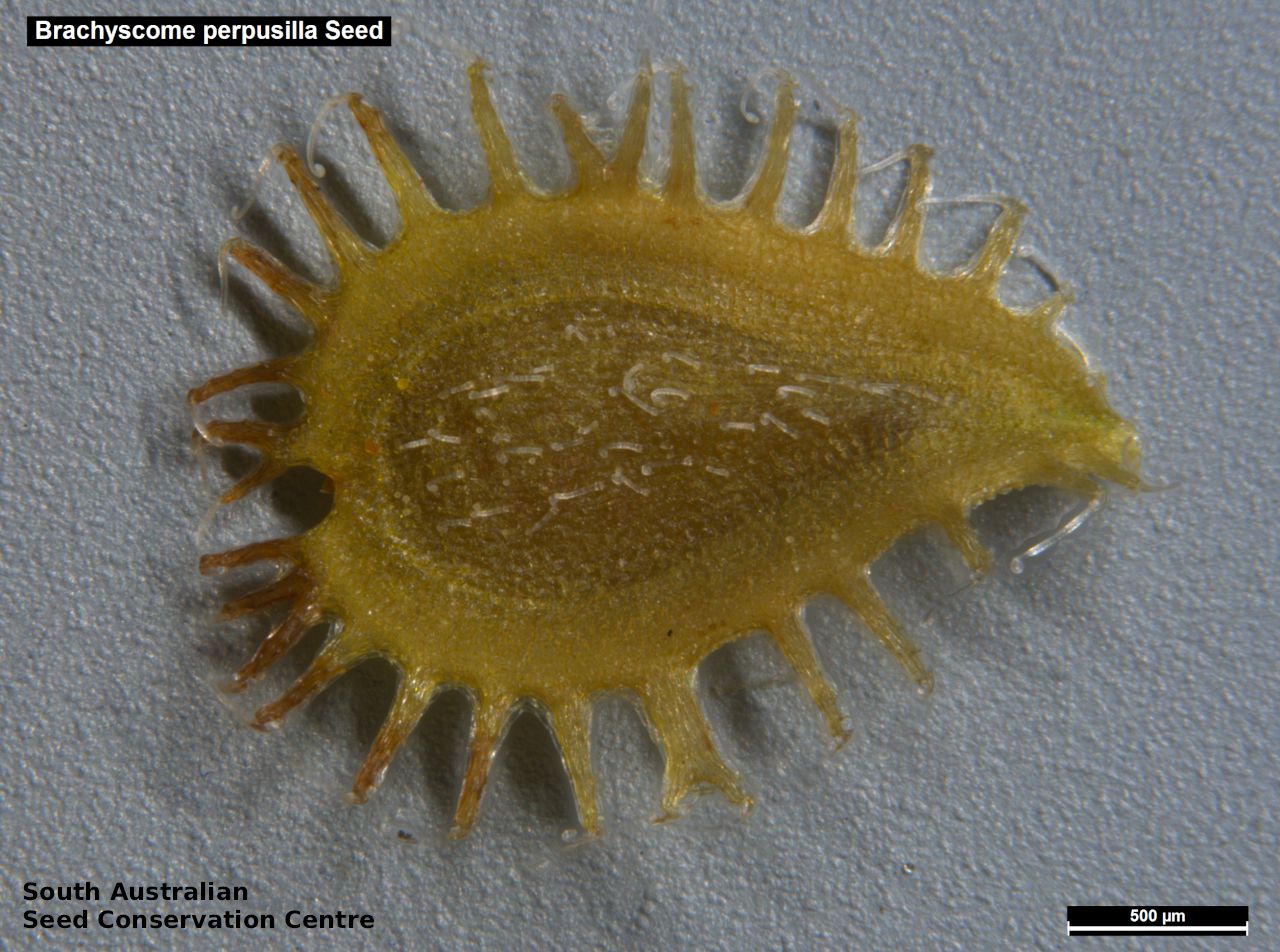
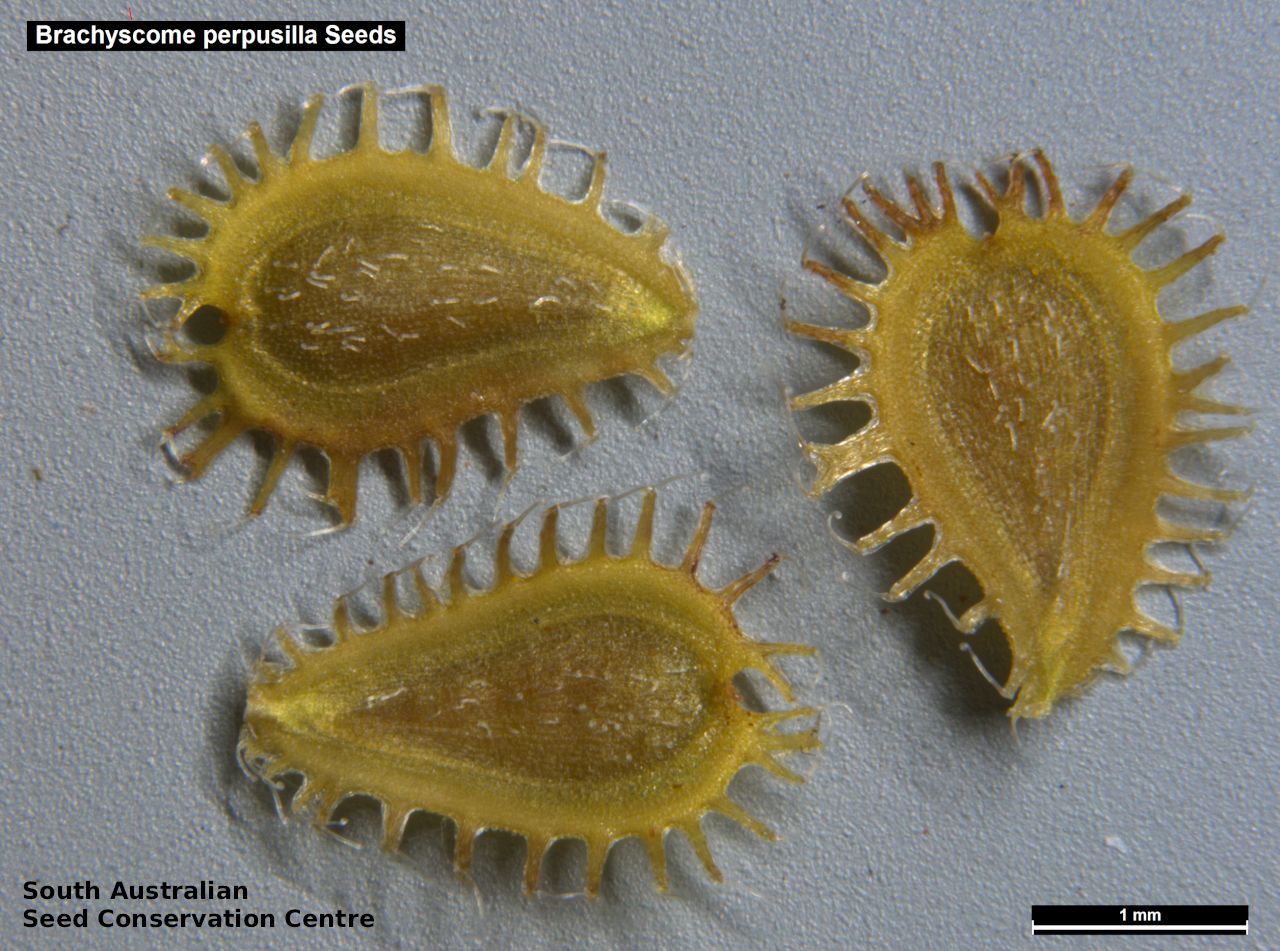


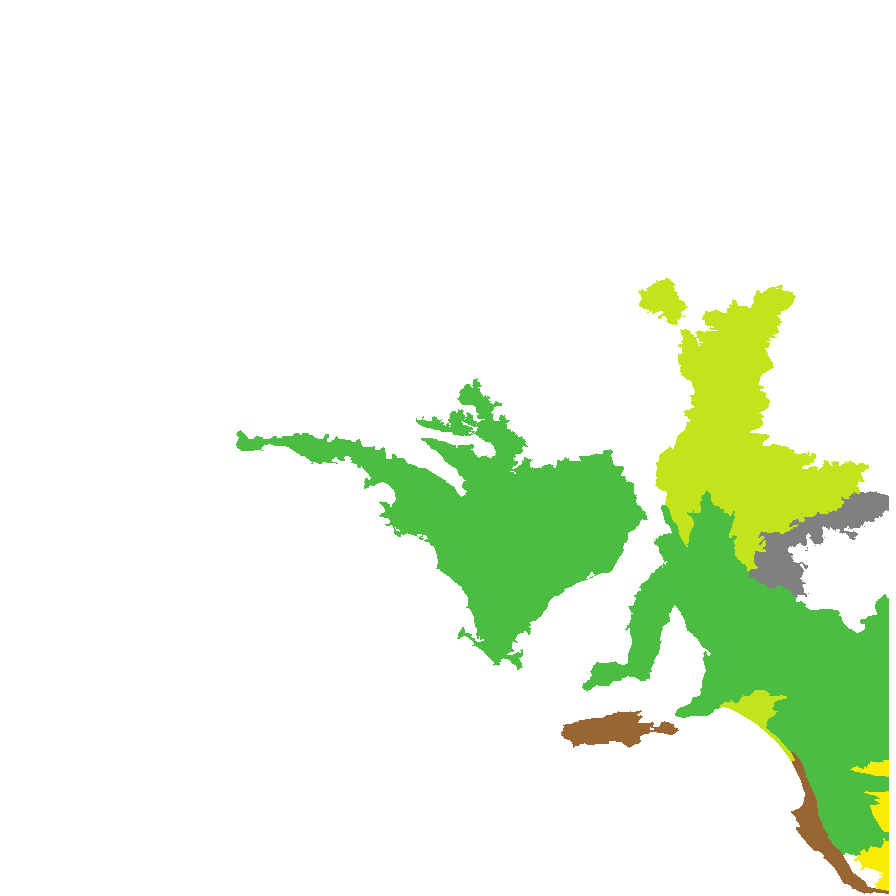
Botanical art
Prior names
Silphiosperma perpusillum
Silphiosperma collinum
Brachycome collina
Brachycome tenella
Brachycome perpusilla var. tenella
Brachycome perpusilla
Common names
Rayless Daisy
Tiny Daisy
Etymology
Brachyscome from the Greek 'brachys' meaning short and 'kome' meaning hair, referring to the tuft of short bristles or hairs of the pappus. Perpusilla meaning very small or very weak, referring to its habit.
Distribution and status
Found across the southern part in South Australia, growing on loam or sandy loam in mallee and woodland. Also found in Western Australia, New South wales and Victoria. Native. Common in South Australia. Common in the other States.
Herbarium regions: Flinders Ranges, Eastern, Eyre Peninsula, Northern Lofty, Murray, Yorke Peninsula, Southern Lofty, Kangaroo Island, South Eastern, Green Adelaide
NRM regions: Adelaide and Mount Lofty Ranges, Eyre Peninsula, Kangaroo Island, Northern and Yorke, South Australian Arid Lands, South Australian Murray-Darling Basin, South East
AVH map: SA distribution map (external link)
Plant description
Annual herb to 10 cm high with erect to ascending, hairless stems. Leaves all above the base, linear to oblanceolate, entire to lobed to 3 cm long, hairless or with minute glandular hairs. Flowers green and not obvious because the ray florets hardly extend beyond the bracts. Flowering between July and October. Fruits are small daisy heads. Seeds are flat red ovoid seed to 3 mm long and 1.5 mm wide, with deeply divided into hair-tipped lobes margin and scattered hairs on the surface. Seed embryo type is spatulate fully developed.
Seed collection and propagation
Collect seeds between September and December. Pick heads that are maturing, drying off, with brown seeds that dislodge easily. Place the seed-heads in a tray and leave to dry for a week. Then gently rub the heads by hand to dislodge the seeds. Use a sieve to separate the unwanted material. Store the seeds with a desiccant such as dried silica beads or dry rice, in an air tight container in a cool and dry place. Seed viability can be average. This species has physiological dormancy that needs to be overcome for the seed to germinate. For a dormant seed-lot, dormancy may be alleviated with after-ripening for 6-12 months at 45oC or for 12 months at 30oC. One month of moist stratification at 30oC, followed by 10 weeks on agar containing 250 mg/L gibberellic acid may also stimulate germination.
| Location | No. of seeds (weight grams) | Number of plants | Date collected | Collection number Collection location | Date stored | % Viability | Storage temperature |
|---|---|---|---|---|---|---|---|
| MSB | 2,000 (0.63 g) | 50 | 18-Sep-2007 | RJB74322 South Eastern | 85% | ||
| BGA | 6,000 (1.93 g) | 50 | 18-Sep-2007 | RJB74730 South Eastern | 19-Sep-2008 | 65% | -18°C |
| BGA | 3,000 (1.11 g) | 18-Sep-2008 | MJT181 Eyre Peninsula | 1-Jan-2012 | 100% | -18°C | |
| 100+ | 18-Sep-2008 | MJT181 Eyre Peninsula | 1-Nov-2017 | 100% | -18°C |
Number of plants: This is the number of plants from which the seeds were collected.
Collection location: The Herbarium of South Australia's region name.
% Viability: Percentage of filled healthy seeds determined by a cut test or x-ray.